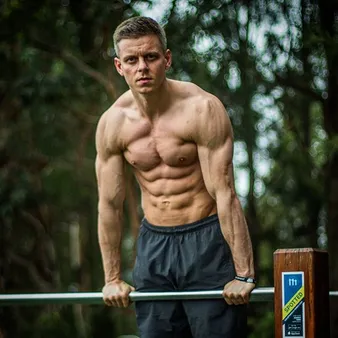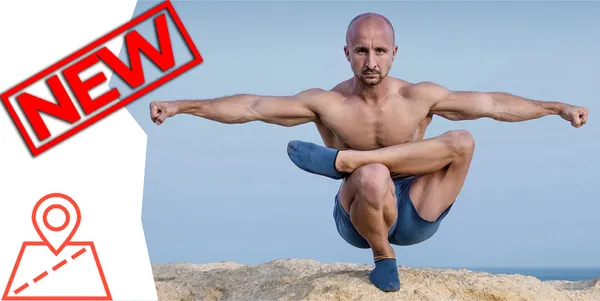Table of Contents
The calisthenics movement is a rapidly growing trend in fitness, with people of all ages and abilities discovering the benefits of bodyweight training. Whether you're looking to improve your strength, flexibility, or endurance, calisthenics offers a challenging and rewarding workout that can be done anywhere, anytime. At Kizworld, we're passionate about helping people achieve their fitness goals, and we believe that calisthenics is a great way to get started on your fitness journey.
| Aspect | Description |
|---|---|
History | Rooted in ancient Greece, calisthenics has evolved into a popular bodyweight training method. |
Benefits | Enhances body composition, strength, mobility, cardiovascular health, and mental well-being. |
Exercises | Beginner-friendly drills to advanced techniques, such as handstands, muscle-ups, and planche. |
Lifestyle | Embraces holistic fitness, nutrition, and a positive mindset, fostering community and personal growth. |
Community | A vibrant network of athletes, enthusiasts, trainers, and advocates who share knowledge and support. |
Future | Continuous advancements in training methodologies and potential for integration with other fitness disciplines. |
I. Calisthenics: The Roots, Benefits, and Techniques
Calisthenics: A Historical Journey
Calisthenics, a form of bodyweight training, has its roots in ancient Greece. The term "calisthenics" is derived from the Greek words "kalos" (beautiful) and "sthenos" (strength), reflecting the belief that this practice enhances both physical and aesthetic qualities. Calisthenics exercises were initially developed by the ancient Greeks as a means of preparing their soldiers for battle. These exercises focused on developing strength, agility, and endurance, and were often performed in conjunction with other forms of training, such as running, swimming, and wrestling.Over the centuries, calisthenics has evolved and spread to different parts of the world. In the 19th century, calisthenics was introduced to Europe and North America, where it gained popularity as a form of physical education and fitness training. Today, calisthenics is practiced by people of all ages and fitness levels, and is recognized for its numerous benefits.
Calisthenics: The Evolutionary Prowess of Human Movement
Calisthenics exercises are designed to utilize the body's own weight as resistance, making them accessible and adaptable for individuals of all fitness levels. These exercises can be modified to suit different needs and goals, ranging from beginner-friendly drills to advanced techniques that require significant strength and coordination.Some of the most popular calisthenics exercises include push-ups, pull-ups, squats, lunges, and dips. These exercises target various muscle groups and can be combined to create a comprehensive workout routine. Calisthenics also incorporates dynamic movements, such as jumping, skipping, and running, which enhance cardiovascular fitness and coordination.
Calisthenics: The Art of Bodyweight Mastery
The practice of calisthenics requires dedication, consistency, and a willingness to challenge oneself. As individuals progress in their calisthenics journey, they can gradually increase the difficulty of their workouts by incorporating more advanced exercises and variations. This progressive approach allows practitioners to continually improve their strength, skills, and overall fitness.Calisthenics is not just about building physical strength; it also fosters mental resilience and self-discipline. The challenges and setbacks encountered during training can help individuals develop a growth mindset and a belief in their own abilities. Calisthenics practitioners often form a sense of community and support, sharing knowledge, encouragement, and motivation with one another.
Calisthenics Exercise | Targeted Muscle Groups |
|---|---|
Push-ups | Chest, triceps, shoulders |
Pull-ups | Back, biceps, forearms |
Squats | Legs, glutes, core |
Lunges | Legs, glutes, hamstrings |
Dips | Triceps, chest, shoulders |
In addition to the physical and mental benefits, calisthenics also promotes a holistic approach to fitness. Calisthenics practitioners often embrace healthy nutrition, adequate rest, and a positive mindset as integral components of their training. This comprehensive approach fosters overall well-being and supports long-term fitness goals.
Calisthenics: The Roots, Benefits, and Techniques
II. Calisthenics: A Historical Journey
Ancient Roots
Calisthenics traces its origins back to ancient Greece, where it was an integral part of physical education and military training. The term "calisthenics" itself derives from the Greek words "kalos" (beautiful) and "sthenos" (strength), reflecting the belief that these exercises could enhance both physical and aesthetic fitness.
The ancient Greeks believed that a healthy and strong body was essential for a virtuous and productive life, and calisthenics was seen as a means of achieving this ideal. Calisthenic exercises were designed to develop strength, flexibility, coordination, and agility, and they were often performed in conjunction with other physical activities, such as running, swimming, and wrestling.Calisthenics has a long and rich history, and its principles continue to be practiced today.
Calisthenics in Ancient Greece |
|---|
Enhanced strength, mobility, and flexibility |
Cultivated physical and mental well-being |
Considered integral to education and military training |
Evolution and Modernization
Over the centuries, calisthenics continued to evolve and spread throughout the world. In the 19th century, calisthenics gained popularity in Europe and North America as a form of physical training for both men and women. The Swedish gymnast Per Henrik Ling developed a system of calisthenics that emphasized body control and coordination, and his methods were widely adopted in schools and gymnasiums.
In the 20th century, calisthenics continued to evolve and diversify. New exercises were developed, and calisthenics was increasingly used for rehabilitation and fitness purposes. Today, calisthenics is practiced by people of all ages and fitness levels around the world.Calisthenics offers a wide range of benefits, and it can be adapted to suit the needs of any individual.
- Developed by Swedish gymnast Per Henrik Ling
- Emphasized body control, coordination, and flexibility
- Widely adopted in schools and gymnasiums in the 19th century
Calisthenics: A Historical Journey
III. Calisthenics: The Evolutionary Prowess of Human Movement
Calisthenics, an ancient practice rooted in the human desire for physical prowess, has evolved into a comprehensive fitness discipline that empowers individuals to achieve remarkable feats of strength, agility, and coordination. This transformative movement has left an indelible mark on the annals of human history, shaping our understanding of physical potential and inspiring generations to embrace the boundless possibilities of the human body.From the rigorous training regimens of ancient Greek warriors to the gravity-defying feats of modern-day calisthenics athletes, this discipline has consistently pushed the boundaries of human movement. Calisthenics has empowered individuals to transcend physical limitations, showcasing the incredible adaptability and resilience of the human body.
- How to Do a Muscle-Up: A Step-by-Step Guide
- The Best Calisthenics Gifts and Accessories for Enthusiasts
- The Best Calisthenics Quotes and Motivation to Inspire Your Journey
Calisthenics Exercise | Difficulty Level | Benefits |
|---|---|---|
Push-ups | Beginner | Upper body strength, endurance |
Pull-ups | Intermediate | Back strength, grip strength |
Handstands | Advanced | Core strength, balance, coordination |
The beauty of calisthenics lies in its accessibility and versatility. Unlike traditional gym workouts that require specialized equipment, calisthenics can be performed anywhere, anytime, with no need for expensive memberships or bulky machines. This democratizing aspect of calisthenics has made it a popular choice for individuals from all walks of life, fostering a sense of community and inclusivity within the fitness world.Getting Started with Calisthenics: A Beginner's GuideCalisthenics has also gained recognition for its holistic approach to fitness, encompassing not only physical development but also mental and emotional well-being. The discipline emphasizes the importance of proper nutrition, adequate rest, and a positive mindset, recognizing that true fitness extends beyond aesthetics and encompasses overall health and happiness.The Best Calisthenics Supplements and Nutrition for Optimal PerformanceAs calisthenics continues to evolve, we can expect to witness even more groundbreaking advancements in training methodologies and techniques. The integration of technology, such as wearable fitness trackers and virtual reality training programs, has the potential to further enhance the calisthenics experience, making it more accessible, personalized, and effective.How to Do a Squat: A Step-by-Step Guide for BeginnersThe future of calisthenics is bright, with endless possibilities for innovation and growth. As the world becomes increasingly aware of the transformative power of bodyweight training, calisthenics is poised to play an even more significant role in shaping the fitness landscape of the future.
Calisthenics: The Evolutionary Prowess of Human Movement
IV. Calisthenics: The Art of Bodyweight Mastery
Calisthenics Progressions: Gradual Steps to Excellence
Calisthenics exercises can range from beginner-friendly drills to advanced techniques that require immense strength and coordination. Embracing a progressive approach allows individuals of all fitness levels to start their calisthenics journey and gradually elevate their skills. These progressions break down complex movements into manageable steps, ensuring safety and preventing injuries while facilitating consistent progress. Whether it's transitioning from knee push-ups to full push-ups or mastering the planche, the concept of progressions empowers individuals to conquer new challenges and witness their physical growth unfold.
- How to do a muscle-up
- The best calisthenics gifts and accessories
- The best calisthenics quotes and motivation
Calisthenics Variations: Exploring Diverse Movement Patterns
The world of calisthenics extends beyond the conventional exercises we often associate with it. It encompasses a vast repertoire of variations that cater to different fitness goals and preferences. These variations introduce unique movement patterns, challenging the body in novel ways and preventing plateaus. Whether it's incorporating weights into calisthenic movements or exploring gymnastic rings, variations add an element of freshness to training, keeping practitioners engaged and motivated.
Type | Difficulty Level | Benefits |
|---|---|---|
Beginner | Entry-level, suitable for all fitness levels | Improves body composition, flexibility, mobility |
Intermediate | Requires some prior experience and strength | Enhances muscular endurance, coordination, balance |
Advanced | Demands high levels of strength and technique | Develops exceptional body control, power, agility |
Calisthenics Equipment: Enhancing Training Possibilities
While calisthenics can be performed anywhere with minimal equipment, certain tools can augment the training experience and facilitate progression. Equipment such as weights, resistance bands, and gymnastic rings adds versatility to workouts, allowing individuals to target specific muscle groups effectively and challenge themselves with increased intensity. These tools enable practitioners to customize their training programs and cater to their unique fitness goals. However, it's essential to emphasize that calisthenics remains accessible and rewarding without the need for elaborate equipment, making it a viable fitness option for individuals with varying resources.
- The best calisthenics mats and blocks
- The best calisthenics bands and straps
- The best calisthenics bars and rings
Calisthenics: The Art of Bodyweight Mastery
V. Conclusion
The calisthenics movement is a great way to get in shape, have fun, and make friends. It's a challenging but rewarding way to improve your fitness, nourish your brain, forge strong bones, up your mobility, boost your confidence, and elevate your mood. If you're looking for a new way to get fit, calisthenics is a great option.